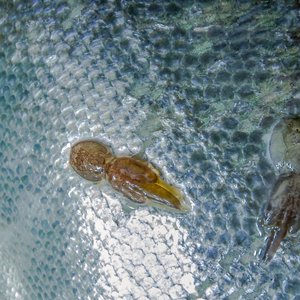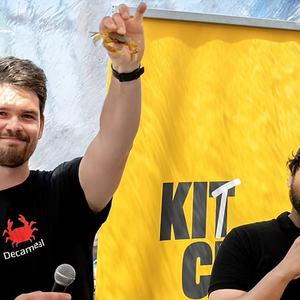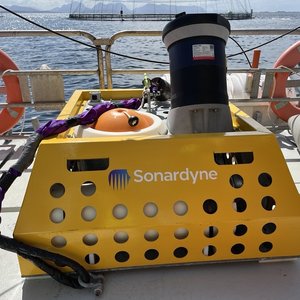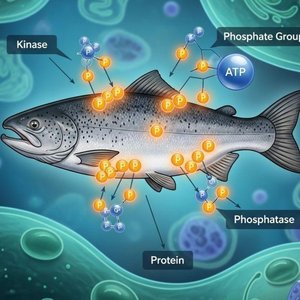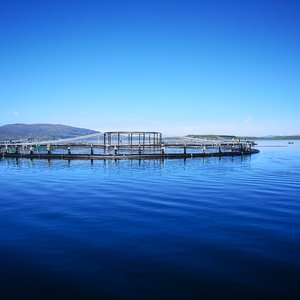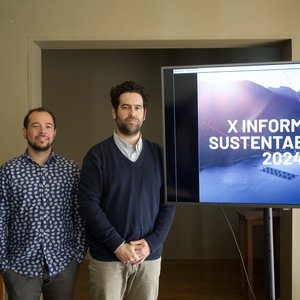Introduction
Extrusion Cookers have been successfully manufacturing dry pet foods and fish feeds for over 30 years and it largely thanks to this engineering technology that the respective industries have reached the size they are now at. These industries have been largely controlled by the extrusion cookers that the individual companies own and product formulation and performance characteristics have been more or less at the mercy of the high pressure high temperature and high shear cooking systems that produce the small dry biscuits that are used to feed the target species. The question raised here is what would we do if we approached animal nutrition from the perspective of the needs of the target species then, having made our plate of ‘food’, we then tried to figure out how to optimally deliver this as an ambient shelf-stable package to the animal.
Nutrition and Palatability
There are few foods more palatable than the natural ‘wet’ foods that pets and fish eat, such as a piece of steak for our dogs. A typical dog will, if given the choice, always eat a piece of steak in preference to a dry dog kibble, no matter what palatability enhancers are applied to the latter. Nutritionists might argue that the more complete formulations of modern wet and dry dog foods enhance health, vitality and active longevity in our dogs, but we could as easily supplement our piece of steak with these micronutrients and still have the same effect.
Feeding starch-based pellets to cats has always been problematic. These animals are much more discerning than dogs and we forever worry about internal structure of cat foods with respect to hardness of bite, about urogenital problems, about eye problems caused by lack of taurine in the kibble diet, and then about obesity.
When we make fish pellets for aquaculture we have to keep the Specific Mechanical Energy (SME) very high to shear and break down the starch so that as it hydrates in the fish’s digestive tract it doesn’t cause problems because of swelling. Some species thrive on starch but others, the carnivores, only tolerate it.
Mention was made of SME earlier. It is recognized that high levels of SME are required to make cat food and fish feed, typically not less than 35 watts per kilogram. This level of energy may be translated in reality into pressure, temperature and shear, which all combine to reduce the nutritive value of ingredients. Proteins are denatured and made less digestible. Heat sensitive vitamins are lost. Colors are decolorized. Fats are oxidized. To compensate for this we overdose these ingredients into the formula, some of the ingredients being extremely expensive.
A further issue is caused by leaching of ingredients. This is of more significance in the aquaculture sector where porous pellets tend to lose oil and water soluble materials very quickly as they hydrate. The very things that we achieve in chopping up the starch and making a porous honeycomb cell structure in these pellets increases this problem.
The Process Technology
The supply chain logistics of an industry like the aquaculture industry demands that food be delivered in pellets that are ambient storage stable and are tough enough to cope with storage, shipping and delivery systems without physically breaking apart.
Making dry extruded pellets was at the time the perfect answer to these issues but the machines used, cooking extruders, demand a certain minimal level of starch in the formula, the products being essentially a starch substrate into which is embedded the various structurally ‘inert’ ingredients, as illustrated in the following diagram.
Diagram 1 – A Starch Based Extruded Pellet
Note that this simplified diagram nevertheless illustrates the air cell structure inside the plasticized starch matrix. If this structure is compared with, say, that of a loaf of commercially baked bread it will be seen that the substrate is made of a honeycomb of wheat protein with starch and other nutrients suspended in this structure. The differences in process conditions between our loaf of bread and the dry fish kibble are seen in the following chart.
Chart 1 – Comparative Process Inputs
Bread Fish Feed Kibble
Steam Injection (%) 0 6
SME (watt hours/kg) 11 35
Pressure (Bar Gauge) 0 34
Temperature (deg C) 80 (centre loaf) 130
Moisture Wet (%) 42 25
Moisture Dry (%) 32 8
The high-energy inputs on the fish kibble can be readily seen. The formulation nutritionist will readily agree that this is the reason so much of the vitamins and colors are ‘lost’ in the cooking process.
The fish feed kibble described previously is manufactured on a modern ‘steam’ extruder, where the cooking energy inputs are evenly distributed between injected steam in the conditioning cylinder and the extruder and mechanical work input in the extruder. The primary reason for this very high level of work input is to break down the starch in the formulation to first create the plastic structure of the kibble and also break down the starch enough so that the kibble does not swell when hydrated. The same ingredient mix can be made into a dry kibble by adding water, squeezing gently into a pellet, and then drying under relatively gentle conditions. This creates its own problems in that the structure may not hold together well because the raw starch is not a very good ‘glue’ and the denatured fishmeal protein has lost any structure forming attributes. In other words, when trying to move from a ‘hot’ process to a ‘cold’ process it is necessary not to simply change the process but also to look again at the formulation.
Formulating for Cold Extrusion
It has been suggested that pellets of fish-feed kibble can be made by simply adding water and densifying the ‘dough’ in a ‘cold’ extruder. It has also been mentioned that the ingredients in a standard fish feed formulation may give physical performance problems with respect to pellet durability when making this cold extruded pellet. One needs to look at the baking industry to understand these issues more.
Starch when fully hydrated will be easily broken down. Starch granules hydrate and swell in conditions of excess water and the swollen granules are easily fragmented by even simple stirring or physical agitation. It is under limiting water conditions that starch needs a lot of energy input to break the granules down into fragments. First let us put together a simple formulation for a generic product.
Chart 2 - Generic Fish Feed Formulation
Fish Meal (60% Protein) 60%
Soybean Meal 20%
Wheat or Corn (Maize) 20%
Ignoring for now micronutrient addition, the main structural contribution to the pellet made from the above formula comes from the cereal grain. The extruder will add 6% steam and 35 watt hours per kilogram of energy to all of the above formula simply to break down the starch in this cereal grain. There are two ways of reducing this energy wastage:
(i) Separate the cereal grain, hydrate it with all of the conditioning water and pre-heat it to swell and break down the starch. Blend back with the other ingredients and cold extrude.
(ii) Separate the cereal grain and hot extrude it under dryer conditions than the normal fish feed pellet, thoroughly breaking down all the starch. Add the cereal kibble back to the other ingredients as a new ingredient then cold extrude.
Both of these techniques introduce the philosophy of treating each ingredient according to its need so as to optimize the finished product for the target species needs. It may look at first as if extra process steps are being introduced which complex the manufacturing operation and add to cost, but the reverse of this is true. The high energy cost is invested in 20% of the ingredients with the other 80% not having 6% steam added and being subjected to mechanical energy loadings of around 10 watt hours per kilogram, not the normal of more than 35 watt hours per kilogram. Also the lower levels of mechanical work in the cold extruded product mean that wear costs on the extruder drop dramatically.
Process Changes needed to Cold Extrude
The philosophy of cold extrusion is to form a dense rope from the extruder, the diameter of this rope to be approximately the same size as the required diameter of the finished product. On a normal system there will be a number of ropes coming out of the front of the extruder at the same time. The extruder has to be reconfigured to take out the mechanical energy, removing cut flight screws and steam locks or shear locks, and the die need only be a simple plate with the required number of holes drilled in the face. No knife drive is used.
The ropes from the extruder are conveyed onto a machine that breaks them into small pellets using a toroidal inter-rope attrition technique. This machine is not as complicated as it sounds, being one or a series of spinning discs with about the same power requirement as the extruder knife drive.
The formed pellets are passed onto a small new pre-dryer, which agitates the pellets as it either pre-dries or uses high heat impingement to expand a little before passing the pellets into the existing plant dryer for the process to be completed as normal.
The following process changes are therefore needed:
(i) Change extruder profile to reduce work and densify product
(ii) Replace knife drive with spinning disc toroidal pelleting machine
(iii) Add high impingement pre-dryer before existing dryer
In other words it is quite possible to retrofit any existing plant to cold extrude products.
Energy Balance
The comparison of hot extrusion and cold extrusion is shown below. These figures are taken for a 1mm pellet running at 4 tonnes per hour
Chart 3 – Energy Comparisons
Hot Extrusion Cold Extrusion
Added Steam 7% 0%
Extruder Motor Load KW) 300 30
Water Dried Off 15% 22%
The cold extruded product runs off the extruder at higher moisture than the hot extruded product, but it is much cheaper to dry off the extra 7% water than it is to raise the 7% steam needed for the hot extruded product and look at the difference in motor power. Note that this doesn’t take into account the dramatic reduction in wear costs achieved when cold extruding. Note that it is more advantageous when cold extruding to not try and use the existing high power motor on the extruder but to replace it with a much lower power motor which saves on capital costs of motor and speed controller, start-up power consumption and ‘no-load’ power consumption.
Product Advantages
The following list summarizes the advantages to be gained through using cold extrusion:
1. Nutrients are not subjected to high levels of mechanical shear and temperature. This maximizes bio-delivery of nutrients and minimizes recipe costs where now excess nutrients are added to compensate for process damage.
2. Crumbles can be made at higher levels of efficiency because low levels of heat damage mean fines can be recycled through the process more easily.
3. Product costings are improved because of reduced process energy costs and reduced extruder wear costs (not forgetting there is no need to buy knife blades any more!)
4. Product expansion is achieved in the high impingement pre-dryer. The type of expansion can be controlled to give a floating product or slow sinking product with less nutrient loss through leaching in water.
5. Higher levels of ‘wet’ ingredients can be used, allowing the feed manufacturer to explore more products that utilize fresh, highly nutritious and palatable ingredients.
6. Lower levels of heat and shear in the extruder mean lower levels of oxidation of lipids in the ingredients, which improves nutrition and shelf life.
7. Formulations can be put together that reflect the needs of the target species. For carnivorous species there is no need to use starchy ingredients at all which will reduce total feed costs and improve water quality.
Conclusion
There are always down sides to everything and there may be an ongoing debate about microbiology and disease control, but the human baking industry routinely makes products out of all sorts of high risk ingredients without having to go through a cooking extruder. In fact direct expanded extruded human food products fill only a very limited part of the human food industry because of their limitations in terms of shape, texture and flavor. On the up side cold extrusion represents an opportunity to create more cost effective products that give better bio-delivery, improving health of the target species and contributing to a more sustainable aquaculture industry.
About the author:
Colin Mair has worked in the food, pet food and fish feed industries for over twenty five years in production, formulation and process and product design and trouble shooting. Cormal Technology is dedicated to finding and developing novel product and process solutions. The company is based in the U.K. but carries out work on a global basis. He may be contacted at: Colinedmair@aol.com
Comments on this article? Write to the editor at: editor@aquafeed.com





